History
Koreans in Wartime Japan: Don’t Confuse Illegal Immigrants with Recruited Workers
Published
5 years agoon

(Second in a 3-Part Series)
In Part 1 of this series, it was pointed out that measures were implemented against illegal immigrants during the same period that Korean workers were mobilized to work in Japan. In fact, about 20,000 Korean workers were sent back to Korea during the period from 1939 to 1942, for which we have statistics.
Looking at records of these illegal border crossings, those wanting to go to Japan paid brokers to be stowaways on small boats, forged travel certificates, pretended to be Japanese, or crossed over as sailors or fishermen, and then escaped.
Note that there were many illegal immigrants who pretended to be mobilized workers as soon as wartime mobilization started.
Illegal immigrants trying to pass themselves off as mobilized workers were typically:
- those who struck deals with others who were actually supposed to be mobilized and were given copies of their family registry;
- those who answered the call to mobilization by taking the place of somebody absent;
- those who sneaked in with groups of mobilized workers when the persons in charge were not looking. They would then escape as soon as the group arrived in Japan.
Four Times as Many Migrant Workers as Recruited Workers
We have so far looked at the situation before wartime mobilization. Based on that, I would now like to examine the reality of the wartime mobilization of workers.
We can divide this period into the early “mobilization” phase from 1939 to January 1942, and the later “government-mediated recruitment” and “conscription” phases from February 1942 to August 1945.
Let us first have an overview of the early period.
The National Mobilization Law was promulgated in April 1938, ramping up the systematic mobilization of materials and labor needed for the war effort.
In 1939, the following year, a major labor mobilization under the National Conscription Order began in Japan. But this order did not apply to Korea. Instead, Korean workers were mobilized through a recruitment process that started in September 1939.
Korean workers were recruited in areas designated by the Government-General of Korea and then carried out by businesses producing coal and operating mines in support of the war effort with the approval of the Ministry of Health and Welfare as well as the Government-General.
The recruited workers traveled to Japan in groups led by their new employers or their representatives. As they were traveling in groups, the difficulties of individual travel, including the need for individual travel certificates and individual inspections at the points of departure, were greatly reduced.
This mobilization through recruitment continued until January 1942. Let us briefly set aside the numbers for January 1942 and get an overview of the situation during the recruitment phase. We will examine the statistics for the years from 1939 to 1941.
The Korean population in Japan increased rapidly during this period. It was 799,878 at the end of 1938, but it had increased by 80% to 1,469,230 by the end of 1941. This was an increase of 669,352, or almost 670,000 people.
75% of Migration Was Voluntary
Since the natural increase in the population was 81,105, the number of Koreans migrating must have been 588,247 or about 590,000. Of these, the number of recruited workers were 147,136, or about 150,000, according to Ministry of Health and Welfare statistics. In other words, recruitment accounted for 25% of the total Korean migration at the time.
This means that about 440,000, or 75% of the migrant increase, consisted of people who voluntarily traveled to Japan outside the framework of wartime mobilization.
In other words, the number of migrant workers who went to Japan by themselves was three times larger than the number of wartime-mobilized workers. It was possible for individuals to make applications to migrate even after the start of the recruitment phase. Note that 15,549 illegal immigrants were discovered and deported in this same period.
It is understandable that a large number of Koreans went to Japan in search of high-wage jobs as the labor shortage grew more serious in the wartime economy of Japan.
There was a huge outflow of people from Korea. Of those people, only one in four came within the regulatory framework of wartime mobilization.
There was a shortage of young men in Japan due to military conscription, which was aggravated by the labor mobilization of Japanese that started in 1939. This created a considerable labor shortage that caused the wages of young male workers to soar.
Neither military conscription nor labor conscription initially applied to Korea, so there remained quite a surplus of young male Korean workers. These young men headed for Japan in search of high wages, just like water flows from high to low. This is what generated the flow of 600,000 migrant workers over a three-year period.
Directing the Flow of Labor to Jobs
The Japanese government tried to direct that flow of workers to the coal and metal mines that were indispensable for the war effort. But they were only able to obtain a little more than 50% of the workers stipulated in the mobilization plan and only one-fourth or 150,000 of the Koreans who emigrated.
The remaining 440,000 migrants constituted a huge outflow of people to Japan that occurred outside the framework of the mobilization plan. Among these people were those summoned by family members who had already established themselves in Japan.
One reason why many Korean workers rejected being recruited was that they did not want to work in the underground shafts of coal and metal mines. The majority were farmers and were likely averse to working underground in coal and metal mines, where discipline was strict.
Moreover, jobs for day laborers could be found throughout Japan at construction sites managed by Korean foremen.
40% Escaped Despite ‘Government-Mediated Recruitment’
With the start of the later period of mobilization in February 1942, the administrative body of the Government-General of Korea became directly involved in the process for mobilizing workers. This came to be conducted through what was known as “government-mediated recruitment.”
This was likely a measure to change the situation whereby numerous workers were going to Japan outside the framework of wartime mobilization.
Coal mines, metal mines, construction companies, arms factories, and other businesses requested the Government-General to provide the number of workers they needed. In response, the Government-General assigned mobilization quotas to the provinces (corresponding to Japanese prefectures), which in turn assigned quotas to lower administrative levels, such as districts and townships.
Recruitment posters soliciting applications were placed at provincial and town offices. Local government officials, the police, and persons of local influence were actively involved in mobilization activities.
Conscription Begins in September 1944
Legally-binding conscription began in Korea in September 1944.
By the end of March 1945, there were almost no ferries traveling between Korea and Japan, effectively putting an end to the wartime mobilization of Koreans. As such, it can be said that labor conscription and its penal provisions were in effect for no more than seven months. Yet, this does not change the fact that the wartime mobilization was legal as Korea was under Japanese rule at the time.
The Korean population in Japan also grew during this period. There were 1,469,230 Koreans at the end of 1942, but this increased to about 2 million by August 1945. This was an increase of about 530,000.
The number of workers mobilized from 1942 to August 1945 was 520,548, or roughly 520,000. That is about the same size as the 530,000 increase in the Korean population in Japan.
Looking at the completion rate of the mobilization plan (defined as the percentage of the manpower targets that were met), it was 88% for this overall period. It was 93% for 1942, 81% for 1943, 97% for 1944, and 12% until August 1945. The completion rate for 1942-1944 was a comparatively high 95%.
We only have the 1942 figures for the natural increase in population, defined as population growth not caused by immigration.
If we take the natural increase of 1942, which was 33,000, and use that as our standard for guessing the natural increase for the 2.5-year period from 1943 to August 1945, we get 33,000 x 2.5 = 82,500. This estimate suggests that the natural population increase from 1942 to August 1945 was 115,500, or roughly 120,000.
Since the total increase in the Korean population in Japan and the number of people mobilized from 1942 to August 1945 were about the same, the natural increase in population of 120,000 should be equal to the difference between the number of immigrants and the number of people who returned to Korea.
The immigrant workers and their families who had come to Japan outside the formal framework of the mobilization process and who ended up going back home, probably returned to Korea to flee the war, thus counterbalancing the natural increase in population of 120,000.
In this period, the number of migrants who came as individuals (as opposed to coming as part of a group) fell drastically. The number of people going back to Korea came to outnumber the migrants as the war situation deteriorated.
With almost no Koreans heading to Japan as individuals outside the framework of wartime mobilization, it would seem that the regulated mobilization of workers was realized during this four-year period and the situation was favorable compared to the previous three years during which people were recruited.
The reality is that the wartime mobilization was not going according to plan in this period either. Most of those employed through “government-mediated recruitment” escaped during their contract period, instead becoming “free workers” hired as day laborers at construction sites. On top of this, the majority of those who fulfilled their two-year contracts disappointed their employers by not renewing their contracts, opting instead to become “free workers.”
(To be continued)
South Korea Alleges Conscripted Workers, but Japan Has the Facts
Lie Debunked: Historical Data Show No Forced Labor for Koreans
‘Battleship Island’: Korean Film on Wartime Laborers Criticized for Being ‘Divorced from Reality’
South Korea Breaches Rule of Law, Common Sense with Court’s Wartime Labor Ruling
Let’s Not Aid South Korean Supreme Court’s Misperception of Facts on Wartime Labor
How Japan Should Respond to BTS’ Non-Apology Over the A-Bomb T-Shirt
Author: Tsutomu Nishioka
You may like
-


Tracing Ancient Mountain Trails with the Japanese Alpine Club
-


120 Ancient Mountain Trails Selected for Survey in Japanese Alpine Club Anniversary Project
-


INTERVIEW | Sushi Hero: How a Tokyo Chef Saved the Art from Extinction
-


Why the Greater East Asia War Naming Controversy is a Non-Issue
-


Tibetan Buddhism From Mongolia to the Dalai Lama's Legacy
-


Why Give Takeshima Away? A Look at the Real History



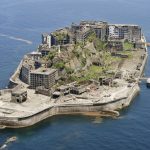

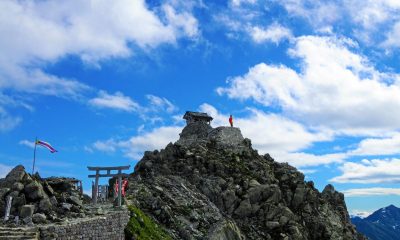

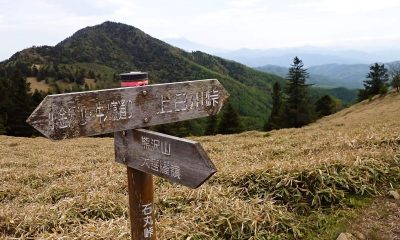



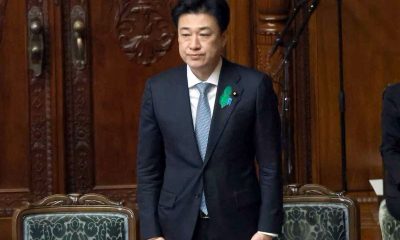

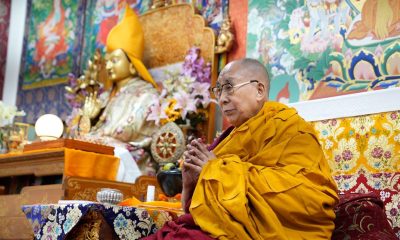

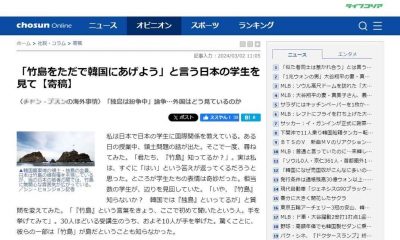

You must be logged in to post a comment Login